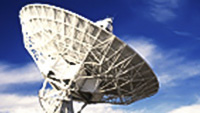Search and order online
Meteosat Second Generation and Meteosat Third Generation Imager
- Video Online only
- Title Meteosat Second Generation and Meteosat Third Generation Imager
- Released: 09/12/2022
- Length 00:00:28
- Language English
- Footage Type Animation
- Copyright ESA/Mlabspace
- Description
Building on the long-standing partnership between ESA and the European Organisation for the Exploitation of Meteorological Satellites (Eumetsat), and the success of both the first generation of Meteosat missions and the subsequent Meteosat Second Generation (MSG) series, it is time for Meteosat Third Generation (MTG) to take over the reins. This third generation of weather satellites will not only guarantee the continuity of data for weather forecasting from geostationary orbit for the next two decades, but also offers significant enhancement of the current imager capabilities, an all-new infrared sounding capability and realtime lightning imaging for early detection of severe storms as they develop.
To do this, the satellite design is based on a significantly different approach compared to the first two generations. Rather than implementing a spinning satellite design adopted for the earlier Meteosats, the MTG satellites accommodate their state-of-the-art instruments on a three-axis stabilised satellite platform, meaning that the orientation of the satellites remains fixed with respect to Earth, with the payloads looking continually at the Earth’s disc. By comparison, the instruments on the previous generation spinning satellites spent less than 5% looking towards the Earth.
MTG-I1 is the first of six satellites that form the full MTG system, which will provide critical data for weather forecasting over the next 20 years. In full operations, the mission will comprise two MTG-I satellites and one MTG Sounding (MTG-S) satellites working in tandem. The remaining satellites will eventually replace those in the first set to ensure the continuity of data for at least two decades.
As the first MTG satellite to launch, MTG-I1 will work with the last Meteosat Second Generation satellite.


